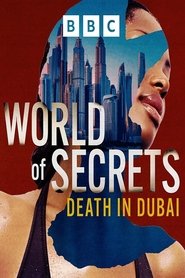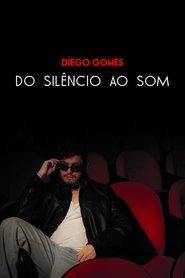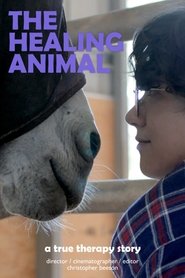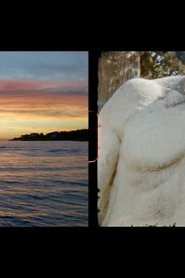New Documentary Movies on Tub Tv - Page 142
-
Death in Dubai #DubaiPortaPotty
2025
Two Ugandan women, Monic Karungi and Kayla Birungi, died in Dubai in 2022 after falling from high-rise buildings, bringing renewed and devastating attention to the exploitative "Dubai Porta Potty" trend. The BBC's Africa Eye investigated the cases, revealing that the rumors surrounding Karungi's death hid an even darker reality of sexual exploitation and human trafficking. -
No estás sol@
2025
No estás sol@
2025
-
Do Silêncio ao Som
2025
Do Silêncio ao Som
2025
-
The Last Round
2025
The Last Round
2025
A documentary about The Bionic Boxing Barber, premiering privately at a local Cornish cinema. -
The Healing Animal
2025
The Healing Animal
2025
A documentary about animal-assisted psychotherapy and the process of gender transition. The client we follow is Charlee, a 25-year-old transgender college student who moved to Colorado to escape gender persecution and seek legal rights to gender marker and name change as well as gender reassignment surgeries. The Healing Animal is unique in that it combines several topics into one story: actual psychotherapy sessions filmed over the course of a year, the legal, physical and emotional process of gender transition, LGBTQIA+ rights, and exploring the science behind animal-assisted psychotherapy. -
Dovzhenko. Full of Compromise
2025
This film, marking the 130th anniversary of Oleksandr Dovzhenko's birth, reveals the artist's controversial path—from his first attempts at cinema to the creation of masterpieces that became symbols of Ukrainian poetic cinema. The authors show his ability to maneuver between creative ambitions and the political demands of the era, remaining a unique figure in cultural history. -
Catching the Tinder Predator
2025
For over a decade, Christopher Harkins presented himself as a charming, charismatic, and successful businessman searching for his perfect match. Using dating apps, he targeted attractive, intelligent, and career-driven women, swiftly drawing them into intense relationships -
Cleopatra's Final Secret
2025
star 7.6After 20 years seeking Cleopatra's tomb, archaeologist K. Martinez's search shifts to an underwater Mediterranean site. She's joined by Titanic finder Bob Ballard, Egyptian Navy and dive teams to explore the location. -
Jota Urondo, An Impertinent Chef
2025
A portrait of Javier Urondo and his discomforting, sharp and provocative take on the act of serving food. Paco Urondo, his father, was a distinguished poet and political activist, murdered by the military dictatorship in 1976. This is the story of Javier, of how he maintains the Urondo Bar, a restaurant in a Buenos Aires suburb, from where he lends new meaning to a legacy and a belonging and turns them into an act of resistance. A film about food as a source of culture and family. -
Emmanuelle in Ontario
2025
A short documentary exploring the theatrical release of Just Jaeckin's Emmanuelle (1974) in Ontario, Canada, at the time of a major shift in its provincial film censorship regime. What followed was a new era in the Ontario government's uneasy dance with film, a debate over art and morality — not only about sex on screen, but about who gets to decide what is too much, too far, or too French. -
Picture Me Gone
2025
Picture Me Gone
2025
Picture Me Gone draws a lyrical parallel between animals confined in aquariums and our relationship to screens. Shot on an iPhone 13, its blurred visuals and meditative soundscape explore disconnection and longing in artificial worlds. -
Sore Thumb
2025
Sore Thumb
2025
Graffiti documentary covering the history of graffiti, the opinions on the topic from a wide range of people and a close insight into a graffiti crew based in the West Midlands. -
Solidarity
2025
Solidarity
2025
Solidarity is an irresistible feeling we celebrate, but in fact, it is mostly contradictory. This documentary delves into the phenomenon itself and uncovers the universal power of human rights. Five protagonists and the three crises in Belarus, Ukraine, and Gaza/Israel reveal to us both the bright and dark sides of solidarity. -
My Grandmother's Skirt
2025
The Witteveen family did not often talk about the war, not even their grandmother, who had lived through it. That changes when one of her grandsons, through his aunt, comes across an old liberation skirt belonging to his grandmother, a garment she had kept for 73 years. Curious about the story behind it, he delves into archives and talks to family members in search of answers. What begins as a simple discovery becomes a personal journey through her war experiences and a reflection on his own freedom, identity, and how the traces of the past are still palpable. -
The Light That Covers the Wounds
2025
After many years of silence and distance, a young filmmaker travels to his place of origin with the intention of reuniting with his mother. As the encounter unfolds, the lights and shadows of their relationship are revealed and a moment of emotional openness is hinted at. -
Asphalte Public
2025
Asphalte Public
2025
In the centre of the bilingual city of Biel, 5082 m² of asphalt are spread out. The rectangular, light grey surface is called Place de l'Esplanade. Between the Palais des Congrès, a representative modernist building, and the Coupole, the Autonomous Youth Centre founded in 1968, the square tells the story of a city between upheaval and recession and is still subject of constant change and controversial urban planning. -
The Moelln Letters
2025
The Moelln Letters
2025
star 9.5Germany, November 1992. In a racist attack, three of İbrahim Arslan’s family members perish in a fire. Thirty years later, İbrahim discovers thousands of letters of solidarity, forgotten in the city archive. We accompany the family as they navigate their profound trauma. -
Livestreams with GrandmaPuzzles
2025
A lifelong hobby becomes a lifeline for an unexpected Twitch streamer. -
Home Is the Ocean
2025
Home Is the Ocean
2025
Over the past 20 years, the Schwörer family has sailed around the world while sharing their expedition examples of nature’s true beauty and inspiring people to live in balance with nature. Along the way, their family has grown, with six children being raised on their sailboat.
 Netflix
Netflix
 Amazon Prime Video
Amazon Prime Video
 Apple iTunes
Apple iTunes
 Apple TV Plus
Apple TV Plus
 Disney Plus
Disney Plus
 Google Play Movies
Google Play Movies
 Paramount Plus
Paramount Plus
 Hulu
Hulu
 HBO Max
HBO Max
 YouTube
YouTube
 fuboTV
fuboTV
 Peacock
Peacock
 Peacock Premium
Peacock Premium
 Amazon Video
Amazon Video
 The Roku Channel
The Roku Channel
 AMC+
AMC+
 Kocowa
Kocowa
 Hoopla
Hoopla
 The CW
The CW
 Vudu
Vudu
 Starz
Starz
 Showtime
Showtime
 PBS
PBS
 Pantaflix
Pantaflix
 FXNow
FXNow
 Tubi TV
Tubi TV
 Kanopy
Kanopy
 Comedy Central
Comedy Central
 Crunchyroll
Crunchyroll
 Microsoft Store
Microsoft Store
 Redbox
Redbox
 Sun Nxt
Sun Nxt
 ABC
ABC
 DIRECTV
DIRECTV
 Crackle
Crackle
 Fandor
Fandor
 Plex
Plex
